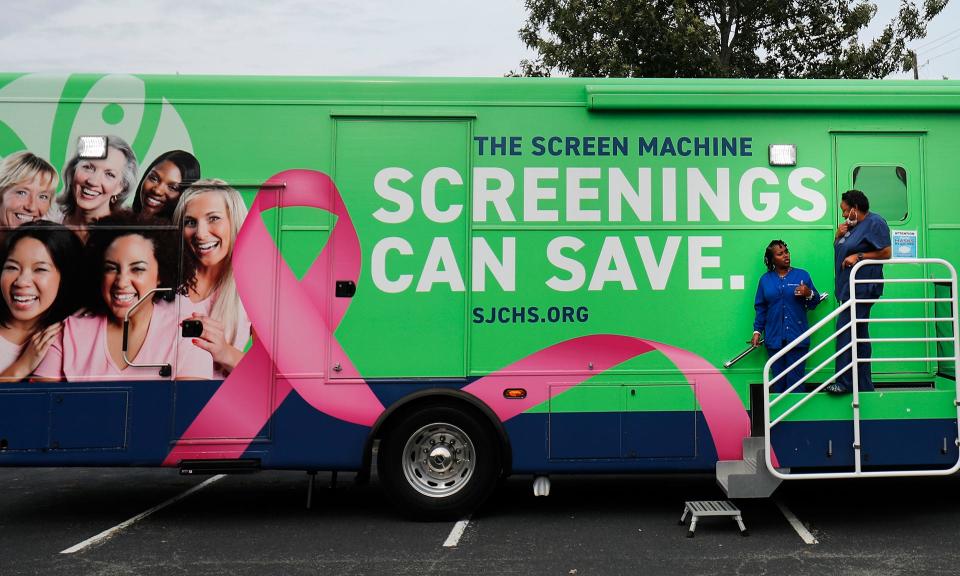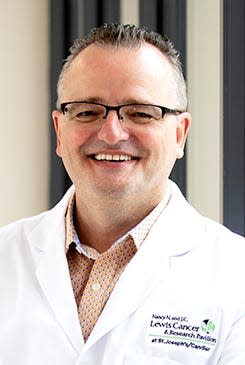Thinking pink: Early detection, mammography key to fighting breast cancer
This is a commentary written by Leonard R. Henry, surgical oncologist and medical director at Nancy N. & J.C. Lewis Cancer & Research Pavilion at St. Joseph's/Candler.
This month, St. Joseph’s/Candler and the Savannah Morning News have partneredfor the 15th consecutive year to Paint the Town Pink. The main purpose
of this monthlong community-wide campaign is to create awareness of breast cancer,
stress the importance of early detection through mammography and encourage
everyone to be personally responsible for their own health.
The October forecast?: Heightened awareness of breast cancer risks
A lot has changed in those 15 years. There have been remarkable
advancements in nearly every component of breast cancer management. There is a
better understanding of genetic risk and identification of high-risk groups and better
imaging both in screening and diagnosis. Treatments are far more tailored to the
individual and their tumor type with an overall trend toward less
extensive operations, less removal of lymph nodes, less radiation treatment and even
less chemotherapy for some patients.
At the same time, there have been entire new classes of drugs developed based off an explosion of knowledge of the underlying mechanisms that cancer cells use to grow without restraint. Many of these drugs are called targeted agents, because they target a certain tumor mutation which can now be understood with tumor gene testing, which is commonly done in centers all around the world.
Breast cancer by the numbers: Near 100% survival rate when caught in earliest stages

There is also the emergence of immunotherapies, which work to turn on a
patient’s immune system to fight cancer, some of these are now applicable to a portion
of patients with breast cancer. The good news is that today the survival rate for those
detected within the earliest stages of breast cancer is more than 95 percent and improving. In many ways, breast cancer management has become the model for progress in fighting cancer for other tumor sites.
However, all these advancements made possible for patients don’t matter much if they
don’t, or can’t access them. There is still much that warrants improvements in access to
breast care -- most notably among culturally diverse populations.
As an example, it is well known that the mortality rate from breast cancer among
African-Americans is considerably higher than among Caucasians. But less known, perhaps even among physicians, is that this was not always the case. Decades ago, the mortality rate between the two groups was virtually the same. The divergence occurred in the early '80s and persists to this day.
Two major advances occurred at about that time: the adoption of screening mammography and the employment of endocrine therapy for hormone-receptor positive cancers. The rates of utilization of mammography were initially substantially lower for minority women (though it has improved over time), and the proportion of hormone-receptor positive tumors among African-American women were lower than their Caucasian counterparts. These major advances in care in the '80s improved the care of Caucasian women more, resulting in the disparity that we continue to see today.
The advancements in breast cancer management have shown us that medical
advancements are not shared equally throughout our society, and even within the
community in which we live. It has informed us that cancer care -- when it is at its best --
must be socially aware and beyond the walls of a cancer center. Rather it must also
engage the community to meet the needs of individuals where they are, and in the context of their situation. Toward that lofty end, there remains much work to be done.
But we must remain resolute.

It’s for those reasons that our work on this community awareness and education
campaign continues and remains vital to our mission. It’s important to note that at the
core of these efforts and this month’s barrage of pinkness is one singular basic truth:
that early detection saves lives and that mammography is currently an important
component of early detection.
Another powerful weapon of mass detection is St. Joseph’s/Candler’s Telfair
Mammography Fund. This safety net exists for those in our community who may be
uninsured or underinsured and feel as though access to this potentially life-saving
screening is out of their reach. The fund removes that financial barrier and makes this
critical screening possible. This community’s past, present, and future support is so
greatly appreciated.
We have certainly seen positive developments over the past 15 years regarding breast
cancer management across the entire spectrum from screening through survivorship.
The next great hurdle is developing the processes and systems that can deliver this
progress uniformly to all people. That achievement will require the combined efforts of
cancer programs and their larger communities. Together we can find a way or make
one.
This article originally appeared on Savannah Morning News: Breast cancer patients could benefit from more awareness of advances

